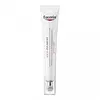What's inside
What's inside
 Key Ingredients
Key Ingredients

 Benefits
Benefits

 Concerns
Concerns

 Ingredients Side-by-side
Ingredients Side-by-side

Water
Skin ConditioningGlycerin
HumectantIsohexadecane
EmollientIsopropyl Myristate
EmollientPPG-15 Stearyl Ether
EmollientPEG-30 Dipolyhydroxystearate
EmulsifyingPhytonadione Epoxide
AstringentMagnesium Sulfate
Phenoxyethanol
PreservativeParfum
MaskingCera Microcristallina
Emulsion StabilisingCI 77891
Cosmetic ColorantSodium Dextran Sulfate
Gel FormingAcrylates/C12-22 Alkyl Methacrylate Copolymer
Steareth-20
CleansingHesperidin Methyl Chalcone
AntioxidantDisodium EDTA
Hydrolyzed Hyaluronic Acid
HumectantEthylhexylglycerin
Skin ConditioningPEG-8
HumectantPentylene Glycol
Skin ConditioningTocopherol
AntioxidantChlorhexidine Digluconate
AntimicrobialN-Hydroxysuccinimide
Skin ConditioningBHT
AntioxidantPotassium Sorbate
PreservativeDipeptide-2
Skin ConditioningAscorbyl Palmitate
AntioxidantPalmitoyl Tetrapeptide-7
Skin ConditioningCitric Acid
BufferingAscorbic Acid
AntioxidantChrysin
Skin ConditioningPalmitoyl Tripeptide-1
Skin ConditioningSodium Citrate
BufferingBiotin
AntiseborrhoeicWater, Glycerin, Isohexadecane, Isopropyl Myristate, PPG-15 Stearyl Ether, PEG-30 Dipolyhydroxystearate, Phytonadione Epoxide, Magnesium Sulfate, Phenoxyethanol, Parfum, Cera Microcristallina, CI 77891, Sodium Dextran Sulfate, Acrylates/C12-22 Alkyl Methacrylate Copolymer, Steareth-20, Hesperidin Methyl Chalcone, Disodium EDTA, Hydrolyzed Hyaluronic Acid, Ethylhexylglycerin, PEG-8, Pentylene Glycol, Tocopherol, Chlorhexidine Digluconate, N-Hydroxysuccinimide, BHT, Potassium Sorbate, Dipeptide-2, Ascorbyl Palmitate, Palmitoyl Tetrapeptide-7, Citric Acid, Ascorbic Acid, Chrysin, Palmitoyl Tripeptide-1, Sodium Citrate, Biotin
Water
Skin ConditioningGlycerin
HumectantCaprylic/Capric Triglyceride
MaskingAlcohol Denat.
AntimicrobialCocoglycerides
EmollientCetearyl Alcohol
EmollientCetyl Palmitate
EmollientIsopropyl Palmitate
EmollientGlyceryl Stearate
EmollientDiisopropyl Adipate
EmollientButyrospermum Parkii Butter
Skin ConditioningLauroyl Lysine
Skin ConditioningIsobutylamido Thiazolyl Resorcinol
BleachingSodium Hyaluronate
HumectantGlycyrrhiza Inflata Root Extract
Skin ConditioningPimpinella Anisum Fruit Extract
MaskingXanthan Gum
EmulsifyingSodium Stearoyl Glutamate
CleansingSodium Chloride
MaskingCitric Acid
BufferingSodium Hydroxide
BufferingPhenoxyethanol
PreservativeEthylhexylglycerin
Skin ConditioningSynthetic Fluorphlogopite
Trisodium EDTA
Tin Oxide
AbrasiveCI 77891
Cosmetic ColorantCI 77492
Cosmetic ColorantCI 77491
Cosmetic ColorantCI 77499
Cosmetic ColorantWater, Glycerin, Caprylic/Capric Triglyceride, Alcohol Denat., Cocoglycerides, Cetearyl Alcohol, Cetyl Palmitate, Isopropyl Palmitate, Glyceryl Stearate, Diisopropyl Adipate, Butyrospermum Parkii Butter, Lauroyl Lysine, Isobutylamido Thiazolyl Resorcinol, Sodium Hyaluronate, Glycyrrhiza Inflata Root Extract, Pimpinella Anisum Fruit Extract, Xanthan Gum, Sodium Stearoyl Glutamate, Sodium Chloride, Citric Acid, Sodium Hydroxide, Phenoxyethanol, Ethylhexylglycerin, Synthetic Fluorphlogopite, Trisodium EDTA, Tin Oxide, CI 77891, CI 77492, CI 77491, CI 77499
 Reviews
Reviews

Ingredients Explained
These ingredients are found in both products.
Ingredients higher up in an ingredient list are typically present in a larger amount.
Ci 77891 is a white pigment from Titanium dioxide. It is naturally found in minerals such as rutile and ilmenite.
It's main function is to add a white color to cosmetics. It can also be mixed with other colors to create different shades.
Ci 77891 is commonly found in sunscreens due to its ability to block UV rays.
Learn more about CI 77891Citric Acid is an alpha hydroxy acid (AHA) naturally found in citrus fruits like oranges, lemons, and limes.
Like other AHAs, citric acid can exfoliate skin by breaking down the bonds that hold dead skin cells together. This helps reveal smoother and brighter skin underneath.
However, this exfoliating effect only happens at high concentrations (20%) which can be hard to find in cosmetic products.
Due to this, citric acid is usually included in small amounts as a pH adjuster. This helps keep products slightly more acidic and compatible with skin's natural pH.
In skincare formulas, citric acid can:
While it can provide some skin benefits, research shows lactic acid and glycolic acid are generally more effective and less irritating exfoliants.
Most citric acid used in skincare today is made by fermenting sugars (usually from molasses). This synthetic version is identical to the natural citrus form but easier to stabilize and use in formulations.
Read more about some other popular AHA's here:
Learn more about Citric AcidEthylhexylglycerin (we can't pronounce this either) is commonly used as a preservative and skin softener. It is derived from glyceryl.
You might see Ethylhexylglycerin often paired with other preservatives such as phenoxyethanol. Ethylhexylglycerin has been found to increase the effectiveness of these other preservatives.
Glycerin is already naturally found in your skin. It helps moisturize and protect your skin.
A study from 2016 found glycerin to be more effective as a humectant than AHAs and hyaluronic acid.
As a humectant, it helps the skin stay hydrated by pulling moisture to your skin. The low molecular weight of glycerin allows it to pull moisture into the deeper layers of your skin.
Hydrated skin improves your skin barrier; Your skin barrier helps protect against irritants and bacteria.
Glycerin has also been found to have antimicrobial and antiviral properties. Due to these properties, glycerin is often used in wound and burn treatments.
In cosmetics, glycerin is usually derived from plants such as soybean or palm. However, it can also be sourced from animals, such as tallow or animal fat.
This ingredient is organic, colorless, odorless, and non-toxic.
Glycerin is the name for this ingredient in American English. British English uses Glycerol/Glycerine.
Learn more about GlycerinPhenoxyethanol is a preservative that has germicide, antimicrobial, and aromatic properties. Studies show that phenoxyethanol can prevent microbial growth. By itself, it has a scent that is similar to that of a rose.
It's often used in formulations along with Caprylyl Glycol to preserve the shelf life of products.
Water. It's the most common cosmetic ingredient of all. You'll usually see it at the top of ingredient lists, meaning that it makes up the largest part of the product.
So why is it so popular? Water most often acts as a solvent - this means that it helps dissolve other ingredients into the formulation.
You'll also recognize water as that liquid we all need to stay alive. If you see this, drink a glass of water. Stay hydrated!
Learn more about Water